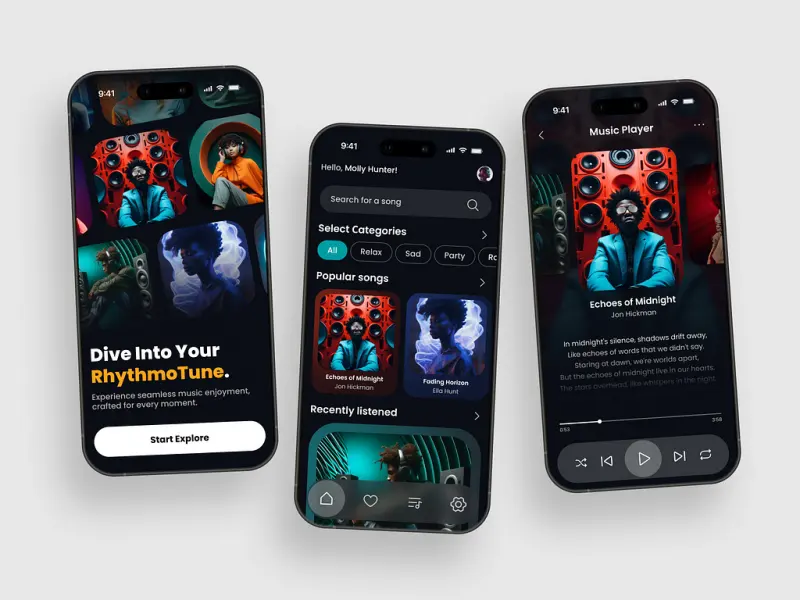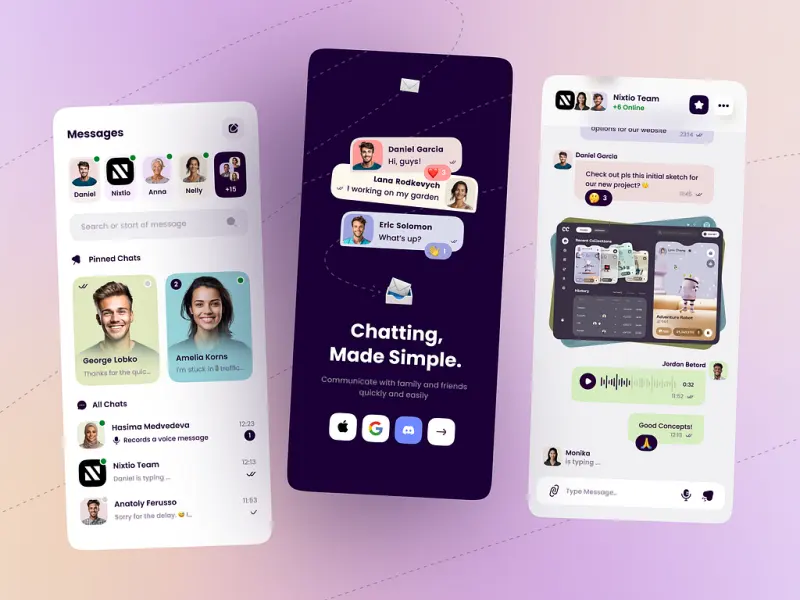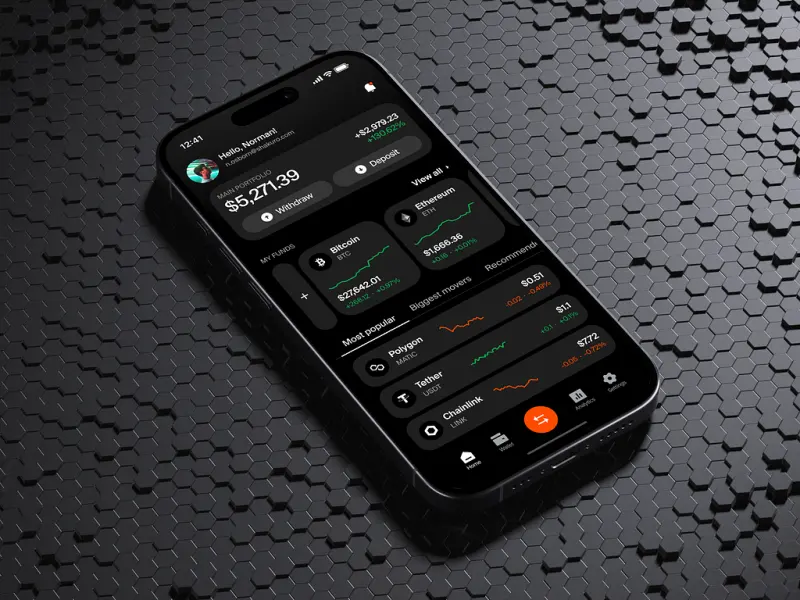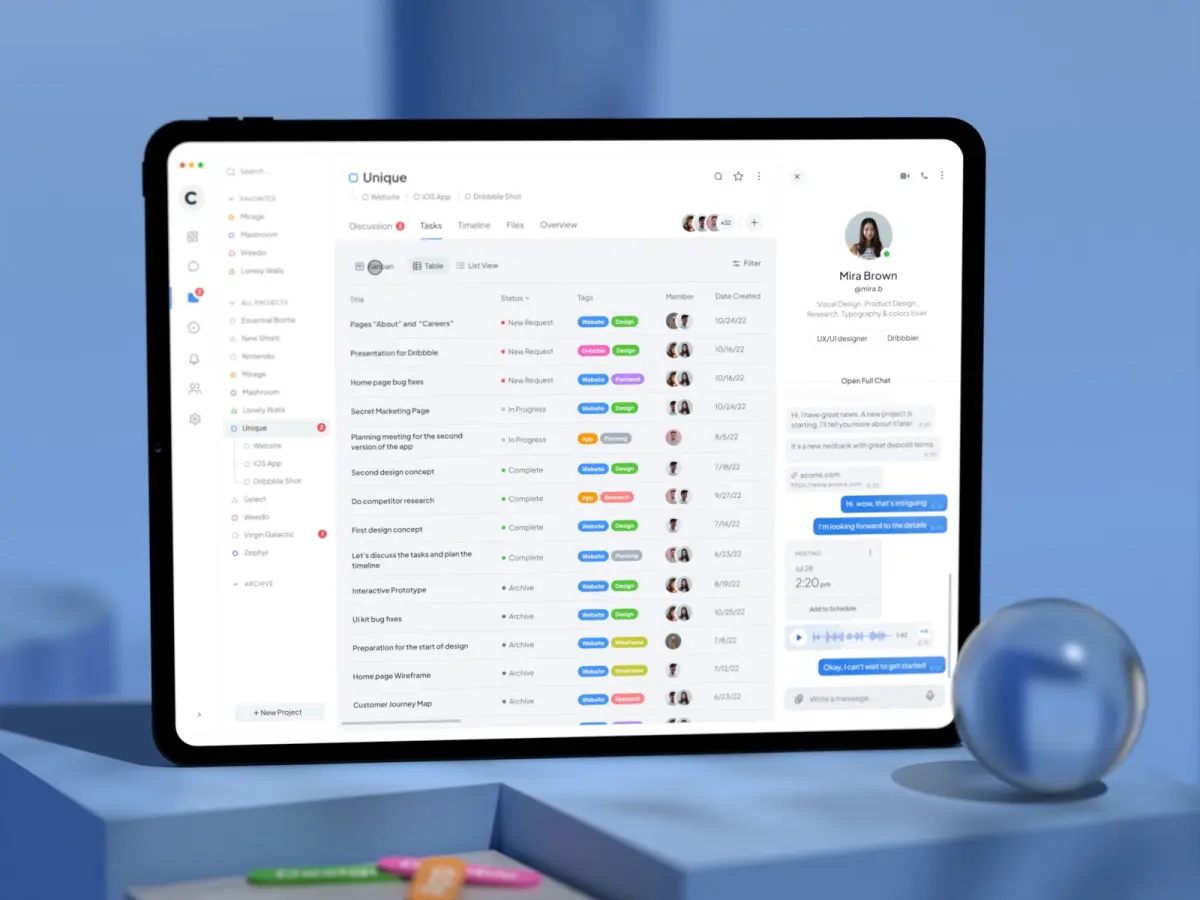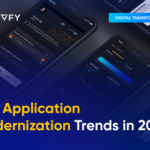What Is Application Modernization? Essential for Digital Growth
- TECHVIFY Team
- 0 Comments
Applications are the lifeblood of modern businesses, driving operations and enabling growth. However, many organizations are burdened by legacy applications that can stifle innovation and scalability. Application modernization is the process of revitalizing these outdated systems to align with current business needs and leverage the latest technological advancements.
This guide explores its fundamentals—application modernization definition, why it’s essential, and the proven strategies for success. We’ll cover the benefits, essential tools, and best practices that will help your applications thrive in today’s digital landscape. Whether you’re an architect, developer, or part of a team looking to future-proof your tech stack, this guide will serve as your roadmap to modernizing legacy applications effectively.
I. What is Application Modernization?
Application modernization isn’t just about simple updates or routine maintenance. It’s a big step towards rethinking how you handle your older systems, turning them into flexible, cloud-friendly solutions using the latest tools available. As technology keeps evolving, so does modernization. For example, it could mean breaking down large, monolithic applications into smaller, independent microservices, or moving to cloud-based platforms and using containers. It could also involve adding new features like artificial intelligence or serverless functions, unlocking capabilities that weren’t possible before.
What is application modernization?
Modernization doesn’t stop at just updating the code. It impacts the entire lifecycle of the application. This means rethinking how you develop software, adopting DevOps practices, and setting up your organization for ongoing improvement and innovation. While it can be a big project, many see modernization as an investment rather than just another expense. When done right, it can bring more flexibility, reduce technical debt, and give your business a real edge in the market.
II. Why Should You Consider Application Modernization?
As we’ve mentioned, application modernization is crucial, especially for companies that rely heavily on technology. Legacy applications, which once served as the backbone of operations, can quickly turn into roadblocks if they limit innovation and require constant upkeep. A well-planned modernization strategy can help address these challenges. Below are some reasons why older systems might be holding your company back and how you’ll know it’s time for modernization.
- The Burden of Technical Debt
Older systems tend to accumulate a lot of baggage—inefficient designs, tangled dependencies, and outdated coding practices. This technical debt makes it hard and costly to make changes, and even small tweaks can introduce new problems. For many organizations, this is the main reason their innovation slows down. - Struggling with Flexibility
Legacy systems, especially those built using monolithic architectures, can make even the smallest updates a hassle. This lack of flexibility means businesses struggle to adapt to market changes, meet customer needs, or seize new opportunities quickly. - Growing Security Concerns
Outdated applications often come with known vulnerabilities or rely on unsupported software components. This puts businesses at risk of cyberattacks, which can lead to data breaches, downtime, and damage to the company’s reputation. - Trouble Scaling
Older systems usually have trouble keeping up with growing traffic, expanding data, or new features. This can cause bottlenecks, lead to frustrating user experiences, and result in missed revenue opportunities. While scaling is possible, it often comes at a steep price. - Rising Maintenance Costs
Maintaining legacy applications can become a major drain on both time and money. As these systems age or need to scale, companies often face skyrocketing infrastructure costs, plus the ongoing expense of working with outdated vendors. Finding developers with the right skills to support these older technologies is also becoming more difficult and expensive.
III. The Benefits of Application Modernization
Here’s a closer look at the key benefits of upgrading an application to modern standards and practices.
Application modernization
1. Faster Innovation and Quicker Time to Market
When businesses spend less time maintaining old systems and infrastructure, they free up more time and resources for innovation. Organizations can speed up development processes by adopting cloud-based tools and services, getting new features and updates to market faster.
2. Improved Security and Reliability
A cloud-first approach offers built-in security and automatic updates that help protect workloads. Other built-in features, like task automation, handle crucial tasks such as high availability, disaster recovery, backups, and performance monitoring—ensuring the system stays secure and reliable.
3. Greater Compatibility and Agility
Modernizing apps not only ensures they work with the latest technology but also makes them adaptable as technology continues to evolve. This means apps can be updated quickly to meet both current and future business needs. Plus, automatic scaling ensures that apps handle spikes in demand seamlessly, while costs decrease when demand drops.
4. Increased Efficiency
In many cases, it’s easier and more cost-effective to modernize existing apps rather than build new ones from scratch. This allows businesses to build on their current investments instead of spending time and money on entirely new solutions. Modernization also helps maintain continuity within existing operations, reducing disruption compared to integrating brand-new apps.
Looking to Outsource Development?
Contact TECHVIFY – Vietnam’s Leading Offshore Software Development & Outsourcing Company, for consultation and development services.
IV. Popular Application Modernization Patterns
There are several common patterns organizations follow when modernizing legacy applications. Each pattern offers different levels of complexity and benefits, depending on the needs of the application and the overall business goals.
Lift and Shift
Often referred to as rehosting, lift and shift is a straightforward method of moving an existing application from a legacy environment, such as an on-premises server, to a modern infrastructure, like a public cloud. With this approach, the application is migrated “as is,” with little or no changes made to its underlying code or architecture. This method is typically the least resource-intensive, making it an attractive option for organizations looking for a quick migration. However, it may not always be the most optimal solution, especially for applications that could benefit from deeper modernization to fully leverage cloud-native capabilities.
Refactoring
Refactoring involves restructuring and rewriting parts of the application’s code to make it more suitable for a modern environment, such as a cloud infrastructure. This approach is often chosen when you want to break up a monolithic application into smaller, decoupled components, commonly referred to as microservices. Refactoring enables the application to take full advantage of modern cloud-native tools, such as containers and orchestration platforms. While this method requires significant effort and development resources, it offers long-term benefits in terms of scalability, resilience, and cloud optimization.
Replatforming
Replatforming strikes a balance between lift and shift and refactoring. It involves making some complementary updates to the legacy application without fully restructuring or rewriting the codebase. For example, you might modify or replace certain backend components, such as the application’s database, to better align with modern cloud platforms. Replatforming allows the application to benefit from cloud services and infrastructure improvements without the extensive code changes required by refactoring.
V. Core Technologies to Drive Application Modernization
Successfully modernizing legacy applications requires the use of modern tools and techniques. As businesses transition away from legacy frameworks and infrastructure, there are several key technologies that can help make modernization efforts more effective.
Technologies of application modernization
DevOps Tools and Best Practices
Adopting DevOps practices is a key part of modernizing applications. DevOps combines development and operations to increase the speed and reliability of software delivery. Tools that support continuous integration and continuous deployment (CI/CD), configuration management, and infrastructure as code (IaC) help automate many aspects of the software development lifecycle. These tools allow teams to release updates more frequently, with greater confidence in the quality and stability of each release. DevOps practices not only accelerate modernization but also ensure that teams can quickly respond to changing business needs.
Cloud Computing
Cloud platforms—whether Infrastructure as a Service (IaaS), Platform as a Service (PaaS), or Software as a Service (SaaS)—bring flexibility, scalability, and managed services that ease the burden of maintaining on-premises infrastructure. For organizations that accelerate their adoption of cloud solutions, the benefits include reduced costs, faster deployments, and access to cutting-edge innovations. Cloud computing also enables businesses to scale their resources up or down based on demand, ensuring they only pay for what they use.
Artificial Intelligence (AI) and Machine Learning (ML)
The integration of AI and ML into modernized applications can unlock new capabilities and provide a competitive edge. These technologies enable businesses to automate complex tasks, gain deeper insights from data, and create more personalized user experiences. AI and ML can also help improve operational efficiency by optimizing processes and providing predictive insights. Additionally, developers can use AI-powered tools, such as GitHub Copilot, to enhance their productivity and speed up the development process. By incorporating AI and ML into modernized applications, businesses can stay ahead of the competition and deliver more intelligent, responsive solutions.
Containers
Containerization platforms like Docker and Kubernetes are vital tools for modernizing applications. Containers provide a standardized way to package and deploy applications across different environments, making it easier to manage complex systems. These platforms also facilitate the orchestration of multiple components within an app, ensuring they work together smoothly. Containers are especially important in microservices architectures, where they help break down applications into smaller, more manageable parts that can be deployed and scaled independently.
Microservices
Decoupling monolithic applications into smaller, independently deployable microservices can greatly enhance agility and resilience. By splitting an app into microservices, businesses can scale individual components as needed and update services without disrupting the entire system. This modular approach allows for more targeted improvements, faster updates, and a more efficient use of resources, which leads to increased system stability and reduced downtime.
Cloud-Native Data Management
As part of the modernization process, updating how data is stored and managed is important. Cloud-native solutions, such as data warehouses, data lakes, and high-performance databases, are designed to handle modern applications’ increased scale and complexity. These tools allow organizations to store, process, and analyze large amounts of data more efficiently, enabling them to fully capitalize on the capabilities of their modernized applications. By leveraging cloud-native data management, businesses can reduce costs, improve performance, and gain deeper insights from their data.
VI. Legacy Application Modernization Trends
Multi-Cloud and Hybrid Cloud Adoption
Two of the most notable trends in legacy application modernization are the increasing use of multi-cloud and hybrid-cloud strategies. Multi-cloud refers to leveraging two or more public cloud services, helping organizations optimize costs, increase flexibility, and boost availability. On the other hand, a hybrid cloud involves a mix of public and private cloud environments, as well as on-premises infrastructure, all integrated to work together seamlessly.
Modernization plays a key role in enabling software teams to optimize their existing applications for these distributed computing environments. Rather than requiring a complete rebuild of critical applications, teams can adapt legacy systems to function efficiently in multi-cloud and hybrid-cloud setups. This makes these cloud strategies two of the most prominent drivers for legacy modernization in today’s IT landscape.
Containers and Orchestration
Another major trend in modernization is the growing adoption of containers and orchestration technologies. Containers provide a lightweight, consistent way to package and run applications across different environments, while orchestration tools like Kubernetes manage and automate the deployment of these containers. Although legacy applications can be containerized, containers are particularly well-suited for microservices architectures—a more decoupled and scalable approach to application development and operations. This shift towards containerization and microservices is seen as a key enabler for modern cloud-native development.
Conclusion
Legacy applications can hold businesses back, limiting innovation and growth. Application modernization is vital to keep systems scalable, secure, and aligned with current demands. By modernizing, you unlock faster innovation, enhanced security, and greater efficiency—turning outdated technology into a powerful asset.
Ready to start your application modernization journey? TECHVIFY is here to help. Our team of experts offers free consultations to assess your unique needs and develop tailored modernization strategies. Let us help you transform your legacy systems into powerful, modern solutions that drive business success.
TECHVIFY – Global AI & Software Solutions Company
For MVPs and Market Leaders: TECHVIFY prioritizes results, not just deliverables. Reduce time to market & see ROI early with high-performing Teams & Software Solutions.
- Email: [email protected]
- Phone: (+84)24.77762.666




